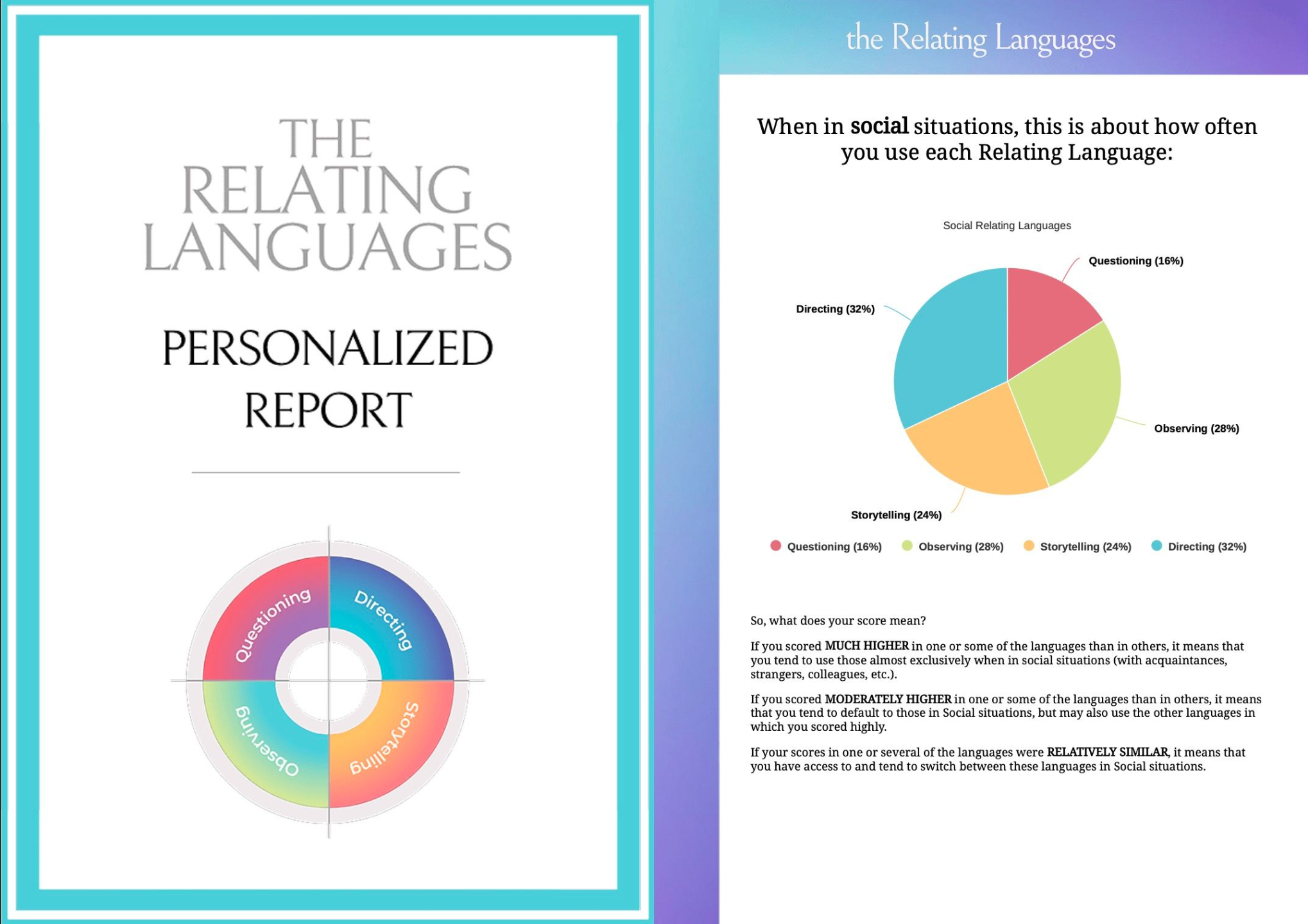The Languages
The Relating Languages
are a compass providing four cardinal directions to navigate conversation.
In any connection, they can be used to define, guide, or invite the type of engagement that will be most easeful, productive, and fulfilling.
We each have an orientation to different languages. The goal of this system is to develop competency in all of them.

What's your Relating Language?
Ready to learn more about how you communicate socially? Take the full Relating Languages Assessment!
At the end of the quiz, you'll get a personalized, downloadable report with lots of information on how to optimize your social communication.

Learn more about the system...
4 Relating Languages have been found thus far:
Questioning
Serving ← Exploring → Interrogating

Overview
When speaking the Questioning language, you lead with your curiosity. You want both breadth and depth from the conversation, even if you have to dig for it. Who wants to talk with a person without learning something new?
Your questions may be personal, topical, or relational: about someone’s inner world, their thoughts and perspectives about the outer world, or about the relationship between you.
Questioning is a great tool for discovering new information and engaging others. It is perhaps the most socially acceptable of the Relating Languages. However, Questioning can also be a power move that puts others on the defensive against your insistence.
Positive attributes:
interested, understanding, receptive to new ideas
Negative attributes:
intrusive, insensitive, can lose themselves in others
Ready to learn more?
Observing
Merging ← Partaking → Withdrawing

Overview
Observing is a language of receptivity and contemplation. It is what you use when there is space in the conversation, when someone else is speaking, when you want to take in new information, or make sure that you understand what has already been said.
Observing can include silence, reflection of another’s words, sharing present-moment personal impact, or naming something you directly notice. When speaking this language, you don’t usually contribute new information to the conversation. But, you can enhance or move along what is already there.
This is a powerful skill for slowing down and deepening conversations. However, Observing can turn into freezing or disengaging if you use it under stress.
Positive attributes:
perceptive, intuitive, spacious
Negative attributes:
detached, frozen, disengaged
Ready to learn more?
Storytelling
Performing ← Conveying → Informing

Overview
The Storytelling language is the best Relating Language for delivering personal or topical information. It can make you the life of the party and provide a magical sense of immersion. But, it can be frustrating for those who strain to get a word in edgewise.
Storytelling includes the whole category of invented, personal, or informational stories - everything from your response to “How was your day?” to a recap of the latest sportsball game, or an explanation of particle physics. These are the stories we tell about ourselves and about the world.
Storytelling is a great tool for communicating information and making yourself understood. However, it can become a wordy defense mechanism under pressure, or a quicksand of explanation from which others cannot escape.
Positive attributes:
engaging, expressive, informative
Negative attributes:
self-involved, performative, overtalking
Ready to learn more?
Directing
Suggesting ← Conducting → Commanding

Overview
Directing is the language of challenge and creation, of “Don’t touch that!” and “Let there be light.” It is what we use when we need to make requests and get our needs across.
When Directing, you may give commands, make requests, or offer suggestions. If you’re good at speaking this language, you may frequently find yourself in charge of situations and groups, whether or not you asked for that role.
Good Directing can be a gift to any group or situation by helping others negotiate their needs, and helping them to understand yours as well. Bad Directing can over-control and shut down others’ expressions, and generate resentment from those who feel overwhelmed.
Positive attributes:
quick, effective, powerful, change-making
Negative attributes:
manipulative, demanding, controlling, intimidating


